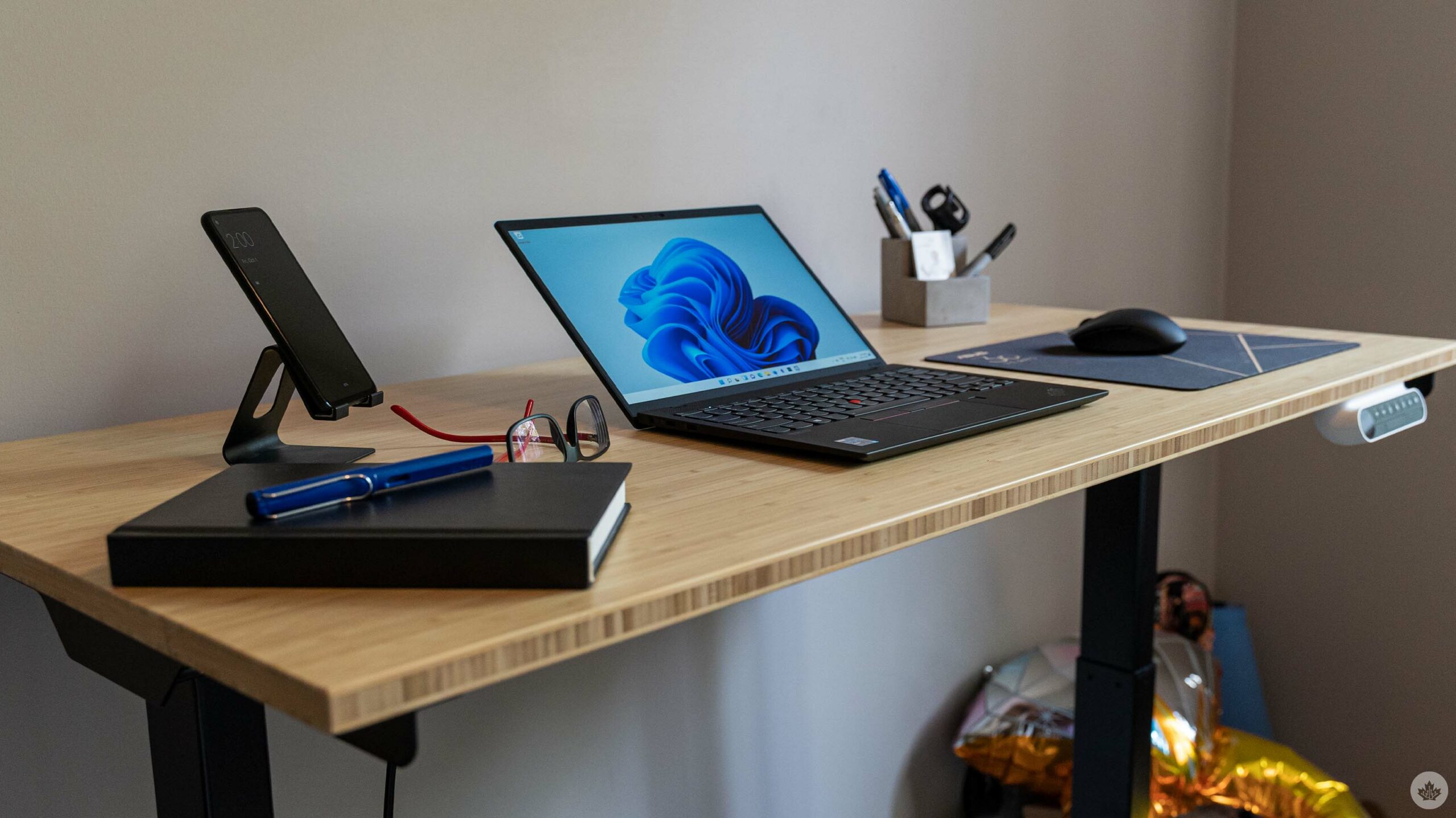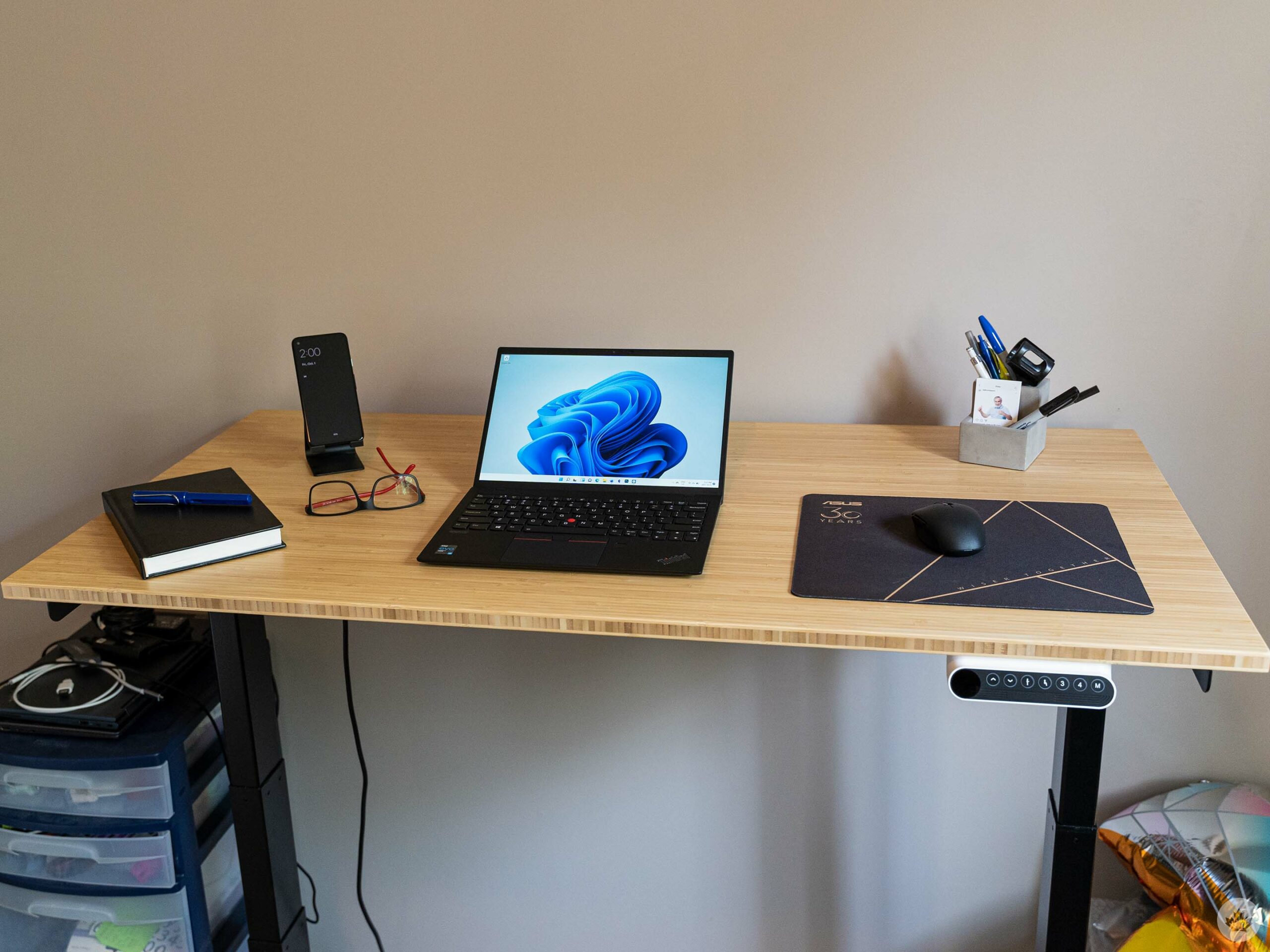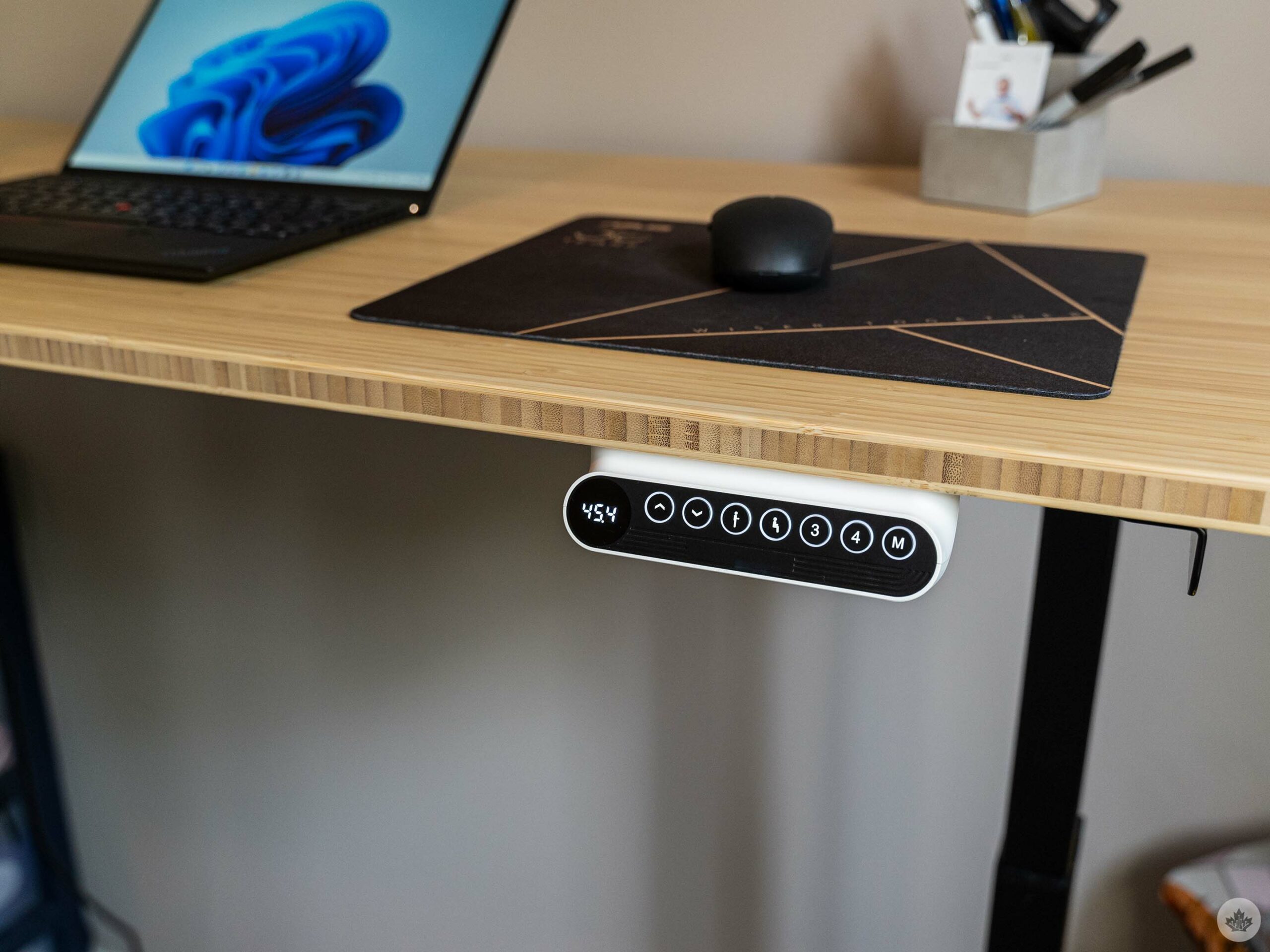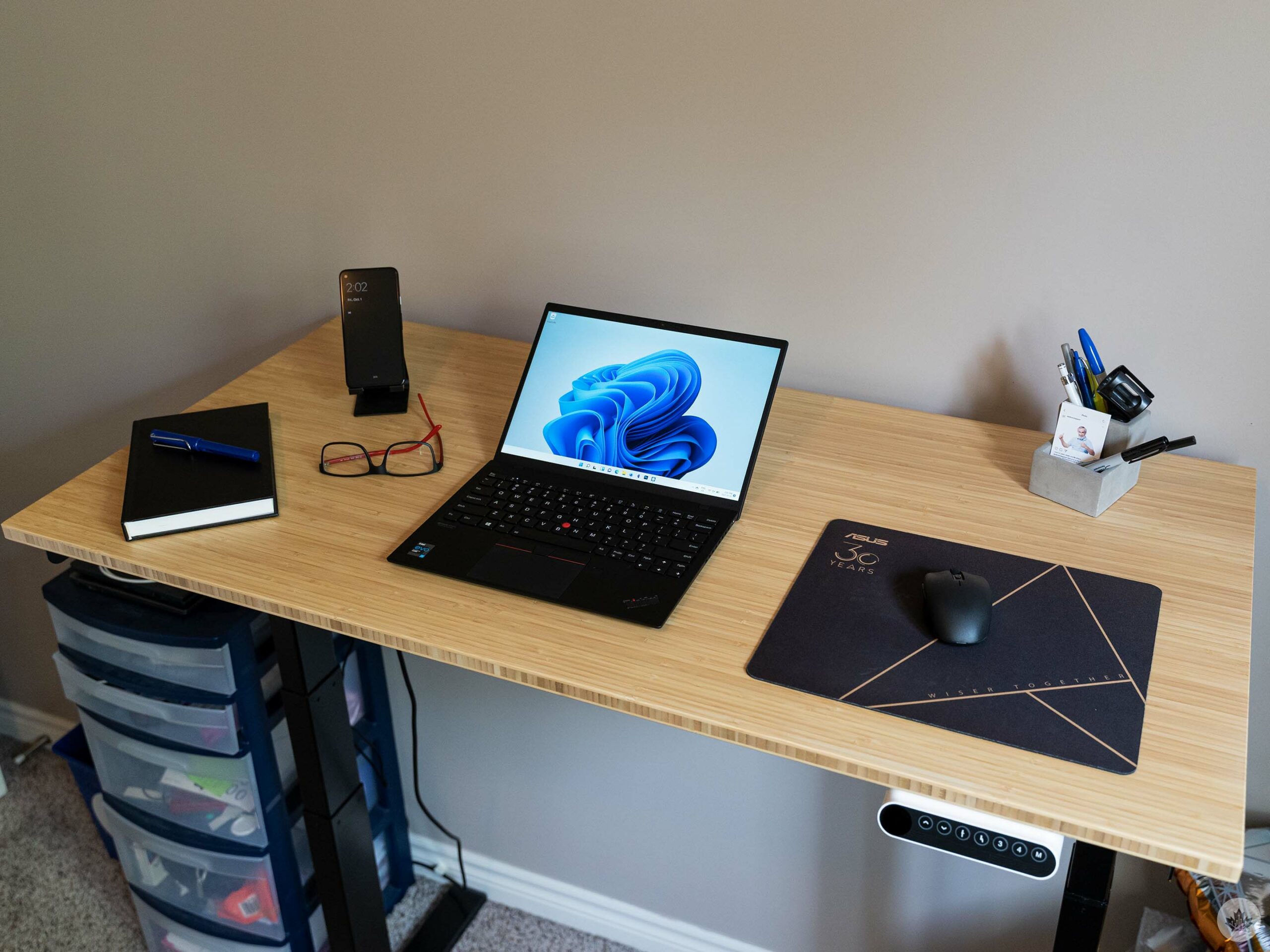
I recently decided it was time to stand up for myself at work.
Literally.
Puns aside, I’ve spent some time with the ‘Kana Bamboo‘ standing desk from FlexiSpot and have come to appreciate being able to take a stand at the (home) office on occasion.
I’m not here to tout any crazy health benefits to standing. However, I will admit having a choice to sit or stand has proven helpful for me, doubly so during the pandemic while working from home. Before COVID, I would take the train into the MobileSyrup office most days of the week, which had the added benefit of encouraging me to stand (rush hour GO trains are packed). I also walked more, mainly because the office was more than 20 steps from my bedroom.
Unfortunately, my lower back isn’t in the best shape. Sitting usually results in a stiff and sometimes sore back, and it’s been a frequent problem during the pandemic since I moved less. That motivated me to try out a standing desk and see if standing — and by extension, moving my back more — would ultimately help reduce stiffness.
Generally, I’d say it has.
I doubt I’m the only one now living and working in generally the same place. If you’re in the same boat as I am and find yourself sitting a lot more, getting a standing desk could help encourage you to sit less. I won’t say it’ll solve all your problems — the FlexiSpot desk I tested certainly hasn’t solved all of mine — but it could help.
Putting it all together

With my spiel about the benefits of standing out of the way, let’s dig into the desk itself. The first thing to note with the FlexiSpot Kana desk (and presumably most standing desks) is there is some assembly acquired.
The Kana desk I tested came in two boxes — one for the desktop and one for the legs. Overall, assembly was relatively easy, although some of the instructions could have been more clear.
Assembly required attaching the feet and desktop mounting brackets to the motorized legs. Then, I had to mount the legs to the desktop. That was probably the most challenging part, if only because the desktop only had some holes pre-drilled for the legs.
“Ultimately, it comes down to how much you’re willing to spend on a desk and whether you want to use a standing desk.”
It seems that was intentional and done so that people had more flexibility with mounting the legs to the desktop, likely because FlexiSpot offers different motorized legs and different sizes of desk. Whatever the reason, be aware you’ll need a drill for this part.
The rest of the assembly was just a matter of connecting the motorized legs to the control panel and doing general cable management with the included cable ties. The Kana desk I tested didn’t have a dedicated spot for cables, so I used sticky ties to attach cables to the underside of the desk. Depending on how much you care about cable management, this part will either be a breeze or painstaking.
Stand with me

I’m not totally sure what to say about using a standing desk other than it’s like using a sitting desk, but you stand.
That’s not to trivialize the experience; it’s just really there’s not much else to it. However, I will say that the control panel I used with the Kana desk was lovely.
The review unit I tried featured the ‘Dual Motor Frame’ and included a control panel with a small LED display and four memory settings. There’s a button to raise the desk and one to lower it. You can also press the ‘M’ button followed by one of the memory settings to save the desk’s current height.
Having memory buttons is super helpful since it lets you quickly move the desk from one height to another. In my case, I shared the desk with my wife since we both work from home. We used one ‘sitting’ height, but we each saved our own ‘standing’ height since I’m quite a bit taller. I’d say the memory feature isn’t as necessary if you don’t share a desk, but it’s super helpful not needing to fiddle with the height every time I wanted to stand.
Finally, the bamboo top is lovely and I think it looks great. Ultimately, the desktop comes down to personal preference, and FlexiSpot offers plenty of alternatives for those who aren’t into the bamboo look.
Pricey, but probably worth it

The Kana Bamboo standing desk I tested starts at $489.99 in Canada, but the Dual Motor Frame increases that to $649.99. It’s a lot of money for a desk, especially when you consider that you can grab fairly cheap, basic desks from Ikea for around $100.
Still, it is a standing desk, and I don’t think $649.99 is a bad price for the FlexiSpot Kana. Ultimately, it comes down to how much you’re willing to spend on a desk and whether you want to use a standing desk.
If you’re not totally sure about buying a full-on standing desk, there are other alternatives you can try. For example, if you just want to see whether a standing desk would work for you, you could try a makeshift option. I did this myself when I started thinking about getting a standing desk — I tried using a coffee table stacked on a regular desk. It wasn’t quite the right height for me, but it was close enough to get a feel for what using a standing desk would be like.
Conversion kits are another alternative. FlexiSpot and other retailers sell kits that you can put on a regular desk that turn it into a standing desk. These can also run a bit pricey — FlexiSpot charges $184.99 for one version of a desk converter on its website.
Ultimately, if you haven’t tried a standing desk before, I’d recommend doing something to test what it’s like first. However, those already shopping for a desk may want to consider the FlexiSpot Kana Bamboo for its reasonable price and performance.
MobileSyrup may earn a commission from purchases made via our links, which helps fund the journalism we provide free on our website. These links do not influence our editorial content. Support us here.


